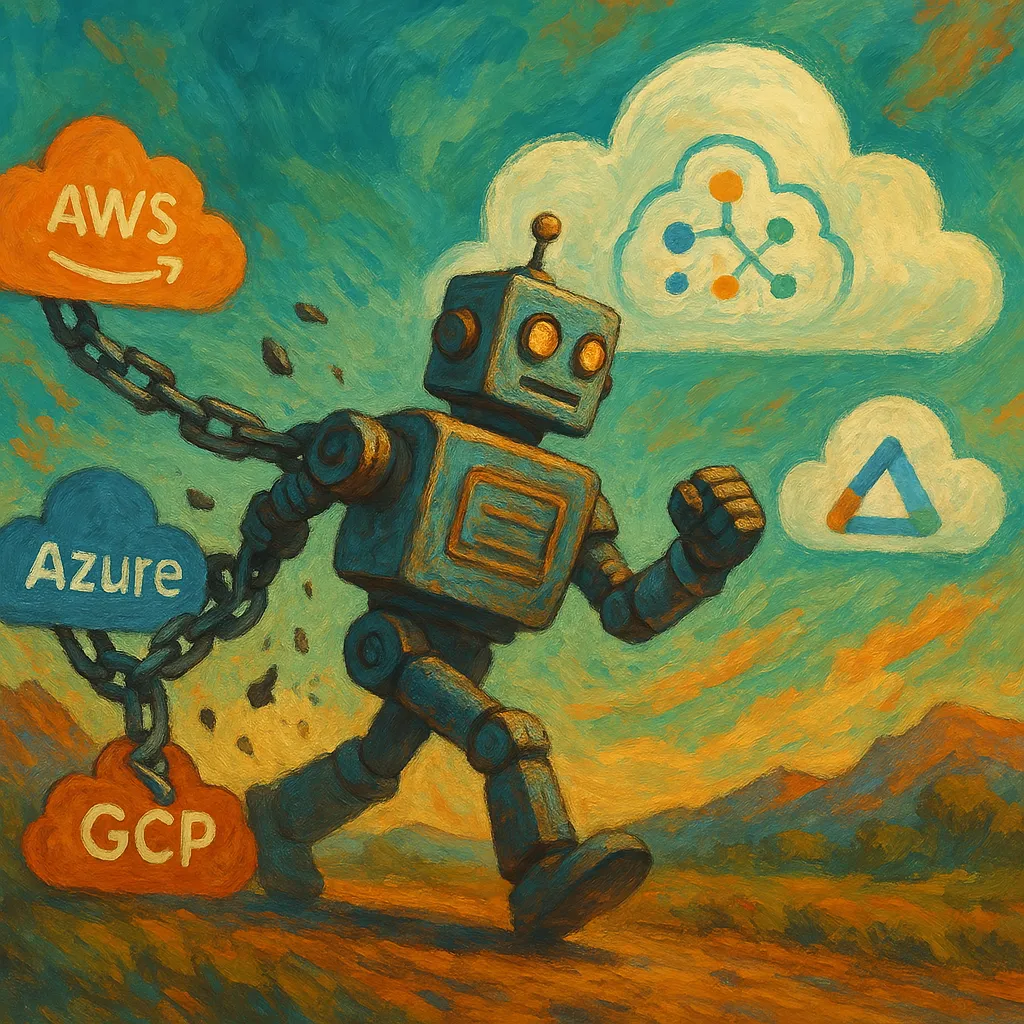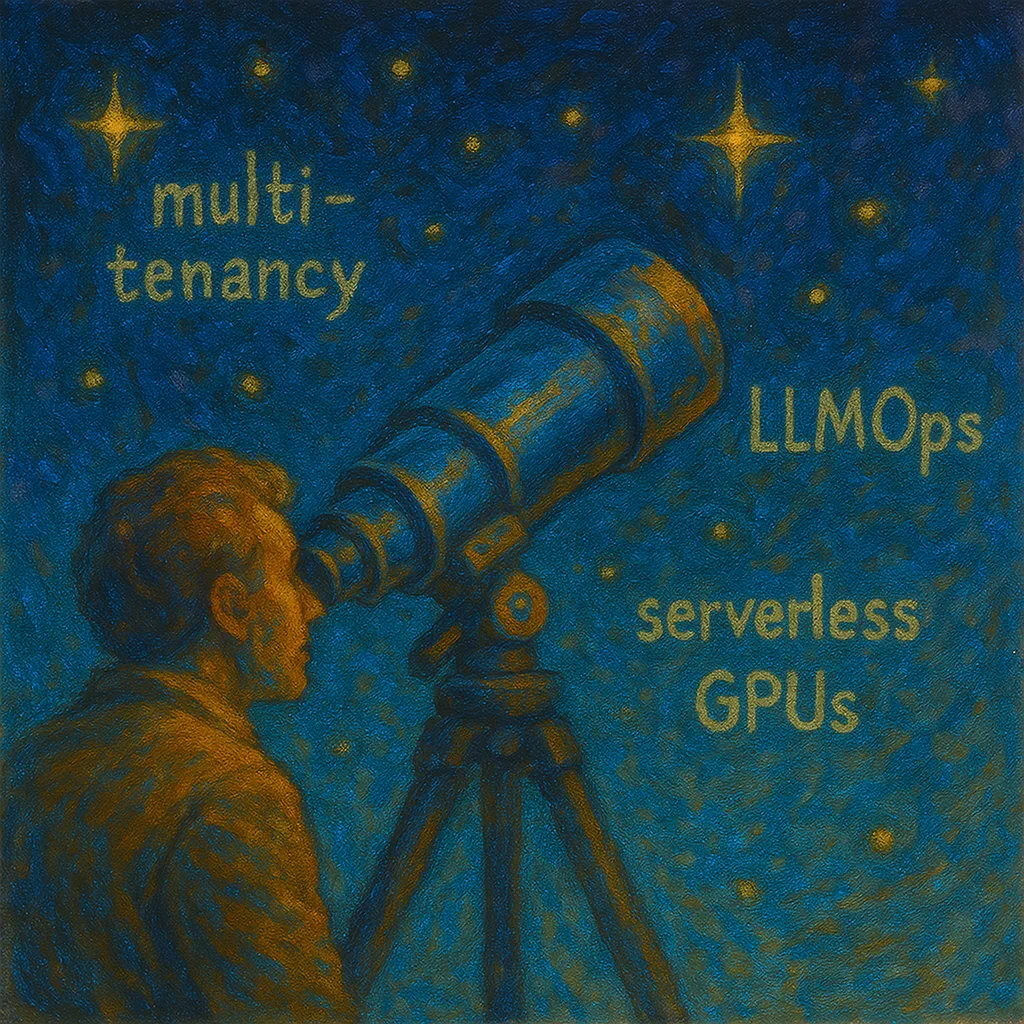
Navigating the Modern Landscape of Machine Learning Training Infrastructure
The relentless progress in machine learning has ushered in an era of increasingly sophisticated models, particularly in domains like natural language processing and computer vision. These advancements, while offering unprecedented capabilities, come with a significant cost: the escalating demands on the infrastructure required for training. Modern machine learning models, especially the large language models that have captured recent attention, necessitate immense computational resources, leading to substantial financial outlays and protracted training durations. The complexity of managing the underlying infrastructure further compounds the challenges faced by machine learning teams. The intricacies of cloud environments, coupled with the need for specialized hardware and distributed computing strategies, create a landscape that can be both daunting and expensive for practitioners seeking to harness the power of cutting-edge artificial intelligence.
This evolving landscape has spurred innovation in how we approach machine learning training infrastructure. Concepts such as cloud agnosticism, the strategic use of spot instances, the enduring relevance of on-premise solutions, the exploitation of heterogeneous hardware, the mastery of distributed training techniques, and the emergence of specialized cloud providers are all playing pivotal roles in shaping the future of the field. Projects like Skypilot, which aim to simplify and optimize AI on the cloud by abstracting infrastructure complexities and intelligently selecting resources, are at the forefront of this transformation. By examining these key trends and the underlying challenges, this analysis seeks to provide a comprehensive overview of the modern machine learning training infrastructure landscape.
Breaking Free: The Imperative of Cloud-Agnosticism in ML Training

Cloud-agnostic machine learning training refers to the ability to design and deploy machine learning workflows that are not bound to a specific cloud provider. Instead, these applications, services, or processes can operate seamlessly across various cloud platforms or even on-premises environments. This approach offers the significant advantage of avoiding vendor lock-in, allowing organizations the freedom to choose and switch between cloud providers based on their specific needs and to leverage the unique strengths of each platform. By embracing cloud agnosticism, businesses can enhance their flexibility and adaptability in a rapidly evolving technological landscape.
However, achieving true cloud agnosticism in machine learning training is not without its complexities, particularly when it comes to managing and porting data across diverse cloud environments. Data management and portability represent substantial hurdles in this endeavor. Ensuring consistent data security, regulatory compliance, and access controls across multiple cloud platforms demands meticulous planning and the implementation of robust, cloud-agnostic data security strategies. The phenomenon of data gravity further complicates matters, as the substantial costs associated with transferring large datasets between different cloud providers can create a significant barrier to workload migration. The expense of moving petabyte-scale datasets makes true data portability a considerable challenge.
Despite these complexities, several practical strategies and tools can aid in achieving cloud agnosticism. Employing containerization technologies like Docker, coupled with orchestration tools such as Kubernetes, significantly enhances the portability of machine learning workloads. Containerization packages applications with all their dependencies, ensuring consistent execution across different environments, while Kubernetes provides a platform-agnostic solution for managing these containers. Furthermore, utilizing cloud-agnostic data platforms built on universal programming languages like SQL, Python, Scala, and Java facilitates data processing and manipulation across various cloud providers. These languages are widely supported, making the transition between platforms smoother. The adoption of Machine Learning Operations (MLOps) tools that are designed to support multiple cloud providers also plays a crucial role. Tools like MLflow, Kubeflow, and ZenML aim to provide a consistent experience for managing the entire machine learning lifecycle, regardless of the underlying cloud infrastructure. Finally, implementing cloud-agnostic data security best practices, including robust encryption mechanisms, stringent access controls based on the principle of least privilege, and effective network segmentation, is essential for maintaining a secure posture across multi-cloud deployments.
The benefits of a cloud-agnostic strategy are manifold. Organizations can avoid the constraints of vendor lock-in, gaining greater control over their technology choices and negotiating power. Cost optimization is another significant advantage, as businesses can strategically select the most cost-effective services from different providers for specific workloads. An AI-driven logistics company, for instance, might leverage one cloud for its lower storage costs and another for its superior machine learning tools. Cloud agnosticism also enhances resilience and flexibility by enabling the distribution of workloads across multiple cloud environments, improving disaster recovery capabilities and ensuring business continuity in the event of an outage. Moreover, organizations can harness best-of-breed services from various cloud providers, combining their unique strengths to optimize their AI solutions.
Despite these compelling advantages, implementing a cloud-agnostic approach presents several challenges. Designing and managing applications across multiple platforms introduces increased complexity, requiring extensive expertise to ensure optimal performance in each environment. Managing multiple cloud environments can also add to the overall operational burden. Furthermore, organizations may encounter a potential loss of functionality if equivalent services are not available across all the chosen cloud platforms. The initial investment in terms of both time and money to establish a cloud-agnostic infrastructure can also be substantial. Ensuring consistent security policies across diverse cloud platforms, each with its own unique security features and APIs, poses another significant challenge.
The pursuit of cloud agnosticism reflects a fundamental desire for risk mitigation and optimization. Organizations aim to insulate themselves from the potential pitfalls of relying on a single vendor, whether it be price hikes or service disruptions. Simultaneously, they strive to achieve optimal performance and cost efficiency by strategically distributing their workloads across the most suitable cloud environments. While compute resources can be abstracted relatively easily through technologies like containerization, the management and movement of data remain a significant obstacle. Data’s tendency to reside within cloud-specific storage solutions, each with its own distinct APIs and egress costs, creates a powerful gravitational pull that makes true data portability a complex undertaking. Therefore, while cloud agnosticism offers a compelling vision of flexibility and control, its successful implementation necessitates careful planning, a significant investment in appropriate tools and expertise, and a thorough understanding of the inherent complexities, particularly in the realm of data management.
Riding the Wave: Leveraging Spot Instances for Cost-Effective Training

Spot instances represent a compelling avenue for achieving significant cost savings in machine learning training. These are essentially spare compute capacity offered by cloud providers at prices considerably lower than their on-demand counterparts. The economic advantage is substantial, making them an attractive option for workloads where cost sensitivity is paramount. However, this cost-effectiveness comes with a caveat: spot instances can be interrupted with minimal notice when the cloud provider requires the capacity back. This inherent transience necessitates careful consideration and strategic integration into machine learning training workflows.
To effectively leverage spot instances, several best practices should be adopted. Designing fault-tolerant applications that can gracefully handle interruptions is paramount. Workflows should be architected to pause and resume execution without substantial data loss. Implementing checkpointing mechanisms is crucial, allowing the periodic saving of the training state to persistent storage. Upon interruption and subsequent re-allocation of a spot instance, training can resume from the last saved checkpoint, minimizing wasted compute time. Diversifying instance types and availability zones also increases the likelihood of obtaining the required spot capacity. By requesting instances from multiple pools, the chances of a successful allocation are enhanced. Cloud providers offer various allocation strategies that prioritize capacity and price optimization, helping users select spot pools with a lower probability of interruption. Employing auto-scaling groups can further mitigate the impact of interruptions by automatically replacing terminated spot instances, maintaining the desired compute capacity. Identifying suitable workloads is also key; spot instances are best suited for short-lived, batch-oriented, or stateless tasks that can tolerate interruptions, such as many machine learning training jobs. Finally, for critical training runs where uninterrupted progress is essential, having fallback plans to on-demand instances in case spot capacity becomes scarce is a prudent measure.
Several cloud-agnostic tools have emerged to simplify the management of spot instances across different cloud providers. Skypilot stands out in this regard, offering managed spot instance functionality with automatic recovery after preemption. It handles the complexities of provisioning, automatically retrying failed allocations, and cleaning up resources after job completion. The integration of Skypilot with MLOps platforms like ZenML further streamlines the utilization of spot instances within comprehensive machine learning workflows. This integration allows practitioners to define their machine learning pipelines in Python and execute them on spot instances with minimal configuration, abstracting away the underlying infrastructure details.
The effective utilization of spot instances hinges on accepting their inherent transient nature. Machine learning workflows must be designed with the understanding that interruptions are a possibility and incorporate mechanisms for seamless recovery. While spot instances offer the potential for significant cost reductions, relying on them for critical, uninterrupted tasks carries considerable risk. Designing for fault tolerance through strategies like checkpointing and automated restarts transforms this risk into a valuable cost-saving opportunity. Furthermore, cloud-agnostic tools like Skypilot are playing a crucial role in democratizing access to this cost-effective computing by simplifying the often-complex process of managing spot instances across various cloud platforms. By providing a unified interface and automating many of the underlying tasks, these tools lower the barrier to entry, allowing a broader range of machine learning practitioners to benefit from the substantial cost savings offered by spot instances without requiring deep expertise in the intricacies of each cloud provider’s spot market.
The Enduring Role of On-Premise Infrastructure in Modern ML

Despite the widespread adoption of cloud computing, on-premise infrastructure continues to hold relevance in the modern landscape of machine learning training. Some organizations maintain a preference for keeping sensitive artificial intelligence workloads and the associated data within their own data centers. Several factors contribute to the continued significance of on-premise solutions, including stringent data sensitivity requirements, the need to adhere to specific regulatory compliance frameworks, and the presence of substantial existing investments in on-premise hardware. Data sovereignty regulations, for instance, may necessitate that certain types of data remain within specific geographical boundaries, a requirement that can be more easily managed with on-premise infrastructure.
When comparing on-premise machine learning training infrastructure to cloud-based solutions, both offer distinct capabilities and limitations. On-premise solutions provide organizations with greater control over data security and compliance, allowing them to implement their own security measures and directly ensure adherence to relevant regulations. For applications with strict real-time processing demands, on-premise infrastructure can offer lower latency due to the proximity of compute resources to the data. Moreover, organizations that have already made significant capital investments in powerful on-premise hardware can leverage this existing infrastructure for their machine learning training needs.
However, on-premise solutions also face limitations when compared to the cloud. Scalability is a major constraint, as expanding compute resources on-premises requires significant capital expenditure and careful capacity planning, unlike the virtually limitless scalability offered by cloud providers. The upfront capital expenditure for purchasing and maintaining on-premise infrastructure is also considerably higher. Furthermore, managing and maintaining on-premise machine learning infrastructure demands specialized in-house IT expertise. Finally, organizations relying solely on on-premise solutions may experience slower access to the latest hardware innovations, as cloud providers continuously update their offerings with cutting-edge technologies.
Several key factors continue to make on-premise solutions a relevant choice for specific use cases. Organizations operating in highly regulated industries, such as finance and healthcare, often prefer on-premise infrastructure for training models on sensitive data to maintain strict control over data governance and compliance. Companies that have already made substantial prior investments in on-premise hardware may seek to maximize their return on investment by utilizing this infrastructure for their machine learning workloads. Additionally, industries with stringent low-latency requirements for real-time applications might find on-premise solutions more suitable, as the proximity of compute to data can minimize processing delays.
The decision between adopting cloud or on-premise infrastructure for machine learning training is not a simple binary choice but rather a complex one that depends heavily on an organization’s unique needs, specific constraints, and overall risk tolerance. While the cloud offers unparalleled scalability, flexibility, and access to a wide array of managed services, on-premise infrastructure provides a greater degree of control over data and can leverage existing hardware investments. Increasingly, cloud-agnostic tools are facilitating a hybrid approach, enabling organizations to seamlessly manage and orchestrate their machine learning workloads across both on-premise and cloud environments. Tools like Kubernetes can orchestrate containers across diverse infrastructure types, and MLOps platforms like Valohai support hybrid deployments, offering a unified management plane for machine learning operations across multiple clouds and on-premise data centers. This hybrid strategy allows organizations to harness the strengths of both cloud and on-premise infrastructure, providing greater flexibility and avoiding complete reliance on a single environment. Therefore, on-premise infrastructure remains a viable and often strategic option for machine learning training, particularly for organizations with stringent data security needs or existing hardware assets, and cloud-agnostic tools are playing a crucial role in integrating these on-premise resources into broader hybrid and multi-cloud strategies.
Unlocking Performance: The Strategic Use of Heterogeneous Hardware

Modern machine learning training can significantly benefit from the strategic utilization of heterogeneous hardware, which involves employing a mix of different types of processors such as Central Processing Units (CPUs), Graphics Processing Units (GPUs), and Tensor Processing Units (TPUs). Each type of hardware possesses unique architectural strengths that make it particularly well-suited for specific aspects of machine learning workloads. GPUs, with their massively parallel processing capabilities, excel at the intensive matrix operations that form the core of training deep learning models. CPUs, on the other hand, are more adept at handling general-purpose tasks, including data preprocessing, control flow, and other sequential operations. TPUs, developed by Google, are specialized accelerators designed specifically to accelerate TensorFlow workloads, offering significant performance improvements for certain types of machine learning tasks. AMD’s ROCm model also aims to provide a hardware-agnostic approach, supporting CPUs, NVIDIA GPUs, and AMD GPUs within heterogeneous systems. By strategically assigning different parts of the machine learning pipeline to the most appropriate type of hardware, practitioners can achieve substantial gains in training performance and overall efficiency.
However, effectively managing resources and optimizing performance across this diverse landscape of hardware introduces considerable complexities. Resource management becomes significantly more intricate when dealing with a variety of processor types, requiring careful allocation and scheduling of tasks to ensure that each component is utilized optimally. Furthermore, optimizing code and machine learning frameworks to fully exploit the specific architectural features of different hardware types can be a challenging endeavor. Frameworks like TensorFlow are specifically designed to interface with CPUs, NVIDIA GPUs, and Google TPUs, highlighting the importance of framework-level support for heterogeneous hardware. Monitoring and debugging performance issues in these heterogeneous environments adds another layer of complexity, as performance bottlenecks can arise from various sources, including the hardware itself, the software configuration, or the communication pathways between different types of processors.
Fortunately, the machine learning ecosystem offers a growing array of tools and frameworks that facilitate training on diverse hardware. Frameworks like TensorFlow and PyTorch provide robust support for training models on CPUs, GPUs, and TPUs, often incorporating hardware-specific optimizations that abstract away many of the low-level details. Azure Machine Learning, for example, fully supports open-source technologies like TensorFlow and PyTorch, enabling users to leverage these frameworks across different hardware options. Machine Learning Operations (MLOps) platforms such as Valohai and ZenML further simplify the management of heterogeneous hardware by providing abstractions that allow users to specify their resource requirements without needing to directly manage the underlying infrastructure. ZenML, for instance, allows users to specify resource requirements for individual steps in their machine learning pipelines, including the use of GPU-backed hardware. Valohai automatically tracks the utilization of various hardware resources, including CPU, memory, and GPU, providing valuable insights for optimization. Moreover, tools like Skypilot can intelligently select the most suitable hardware available across different cloud providers based on the user’s specific requirements and cost considerations. Users can simply specify the desired number and type of GPUs, and Skypilot will handle the underlying provisioning and configuration.
The strategic employment of heterogeneous hardware is paramount for maximizing both the performance and the cost-efficiency of machine learning training. By carefully selecting the most appropriate type of processor for each stage of the training pipeline, organizations can achieve significant speedups and better resource utilization. GPUs, with their parallel processing prowess, are ideal for the computationally intensive tasks inherent in deep learning, while CPUs efficiently handle sequential operations. TPUs offer specialized acceleration for TensorFlow workloads. Machine Learning Operations platforms are playing an increasingly vital role in simplifying the complexities associated with managing this diverse hardware landscape. These platforms provide a unified interface for specifying hardware requirements and automate the often-intricate tasks of resource provisioning and configuration, thereby freeing up data scientists and machine learning engineers to concentrate on the core aspects of model development rather than the underlying infrastructure intricacies.
Scaling Horizons: Mastering Distributed Training Techniques

As machine learning models and datasets continue to grow in size and complexity, the need for distributed training techniques has become increasingly critical. Distributed training involves leveraging multiple compute resources to accelerate the training process, enabling practitioners to tackle challenges that would be infeasible on a single machine. Two primary approaches to distributed machine learning training are data parallelism and model parallelism. In data parallelism, the training dataset is divided into multiple subsets, and each worker (a compute node or device) trains a copy of the entire model on its assigned subset of the data. After each training step, the gradients computed by the different workers are aggregated to update the global model. This approach is particularly effective when the model fits within the memory of a single device, but the dataset is too large to be processed efficiently by one machine. Model parallelism, on the other hand, becomes necessary when the model itself is too large to fit into the memory of a single compute resource. In this approach, different parts of the model are assigned to different workers, and each worker is responsible for training its specific portion of the model. Communication between the workers is then required to coordinate the forward and backward passes of the training process.
When considering the scalability and efficiency of modern distributed training infrastructure, several factors come into play. Scalability hinges on the ability to effectively add more compute resources without a proportional decrease in training speedup. Efficiency is determined by minimizing the overhead associated with communication between workers, such as data transfer and gradient aggregation. Network bandwidth and latency become critical bottlenecks in distributed training, as large volumes of data and gradients need to be exchanged between machines. High-performance networking infrastructure is therefore essential for achieving efficient scaling. Furthermore, ensuring load balancing across all workers is crucial to prevent some resources from becoming underutilized while others are overloaded, which can hinder the overall training progress.
Fortunately, the machine learning ecosystem offers a range of cloud-agnostic solutions for implementing distributed training. Frameworks like PyTorch, with libraries such as DistributedDataParallel and FullyShardedDataParallel, and TensorFlow, with strategies like MirroredStrategy and MultiWorkerMirroredStrategy, provide built-in support for distributed training across various backends, including CPUs, GPUs, and TPUs. These frameworks abstract away much of the low-level complexity associated with inter-node communication and gradient synchronization. Skypilot, built on the distributed computing framework Ray, also enables seamless distributed training across multiple nodes and even across different cloud providers. Skypilot exposes several environment variables that are particularly useful for distributed training, such as the rank of each node and the IP addresses of all the nodes involved in the training job. Moreover, Kubernetes, the widely adopted container orchestration platform, can be effectively used to orchestrate distributed training jobs across a cluster of machines. Kubeflow, an open-source MLOps toolkit that is native to Kubernetes, provides the flexibility to build and manage portable and composable machine learning workflows, including sophisticated distributed training pipelines.
Distributed training has become an indispensable technique for scaling machine learning to address the challenges posed by ever-larger datasets and increasingly complex models. The choice between data and model parallelism is often dictated by the specific characteristics of the data and the architecture of the model being trained. Data parallelism is generally easier to implement and scales effectively when the model fits within the memory constraints of a single device but the dataset is too large to process efficiently. Model parallelism becomes necessary for training extremely large models that exceed the memory capacity of a single compute resource, requiring more intricate strategies for partitioning the model and coordinating communication between the distributed components. Cloud-agnostic frameworks and orchestration tools are playing a vital role in making distributed training more accessible to a wider range of practitioners by providing high-level abstractions and simplifying the often-complex management of the underlying infrastructure. By leveraging these tools, machine learning engineers and data scientists can focus on the core aspects of their models and training procedures rather than getting bogged down in the intricacies of setting up and managing distributed computing environments.
The New Frontier: Exploring Emerging GPU Cloud Providers

The landscape of cloud computing for machine learning training is rapidly evolving, with the emergence of new-tier GPU cloud providers like RunPod and CoreWeave. These companies are establishing themselves as significant players in the market, offering specialized infrastructure specifically tailored for the demanding needs of artificial intelligence and machine learning workloads. Often, their primary focus is on providing access to high-performance NVIDIA GPUs, including the latest and most powerful architectures such as the H100 and H200, which are essential for training cutting-edge models. CoreWeave, for example, was among the first cloud providers to make NVIDIA’s GB200 NVL72-based instances generally available and was also an early adopter of high-performance infrastructure featuring NVIDIA’s H100, H200, and GH200 GPUs.
When comparing the services, pricing models, and target use cases of these emerging providers with those of established cloud platforms like AWS, Azure, and GCP, several key differences and similarities become apparent. RunPod offers a versatile range of services, including on-demand GPU instances through its Secure Cloud and Community Cloud offerings, serverless GPU endpoints for inference, and bare metal GPU servers for users who require complete control over their environment. It provides pre-configured environments optimized for popular AI/ML frameworks like TensorFlow and PyTorch, as well as the flexibility to deploy custom Docker containers. RunPod’s pricing model is based on a competitive pay-as-you-go structure with hourly rates that start at a very accessible level (as low as $0.17 per hour for lower-end GPUs) and scale up to $3.99 per hour for the most powerful options. They also offer a community cloud option with even lower prices and, notably, do not charge fees for data ingress or egress, simplifying cost management for users who transfer significant amounts of data. For users with longer-term needs, RunPod provides discounts for extended commitments on their bare metal servers, with potential savings of up to 74% compared to major cloud providers. RunPod primarily targets AI developers, data scientists, startups, academic institutions, and enterprises seeking cost-effective and scalable GPU resources for various machine learning tasks, including training, fine-tuning, and inference. Their platform has attracted over 100,000 developers.
CoreWeave, on the other hand, focuses on providing high-performance and highly scalable GPU clusters that are specifically optimized for AI workloads. Their offerings include a managed Kubernetes service for orchestrating containerized applications, bare metal computing resources for maximum performance, and high-performance networking solutions based on NVIDIA Quantum InfiniBand technology. A significant recent development is CoreWeave’s acquisition of Weights & Biases, a leading AI developer platform, signaling a strategic move towards offering a more comprehensive suite of tools for building, tuning, and deploying AI applications. CoreWeave’s pricing model includes both pay-as-you-go options and subscription plans tailored to different usage patterns. Their pricing can be granular, with costs potentially broken down by GPU component, the number of virtual CPUs, and the amount of RAM allocated to an instance. Notably, CoreWeave offers free data transfer within its network and between its network and the internet. For enterprise clients with specific requirements, CoreWeave also provides customized pricing options. CoreWeave’s primary target audience consists of AI enterprises and AI-native companies that require massive volumes of specialized compute for high-intensity AI workloads, including large-scale model training and inference. Their customer base includes major players like Microsoft, which accounted for a substantial portion of their revenue in recent years.
Compared to established cloud providers, RunPod and CoreWeave often offer more competitive pricing for GPU instances, making high-performance computing more accessible. RunPod, for instance, claims potential cost savings of up to 74% when migrating from Google Cloud. CoreWeave’s infrastructure, being specifically designed for AI/ML, is reported to deliver significantly faster performance for tasks like inference compared to general-purpose clouds. While the established cloud providers offer a much broader range of services beyond just compute, which can be advantageous for users with diverse needs, the specialization of RunPod and CoreWeave allows them to focus on optimizing their infrastructure and pricing specifically for AI/ML workloads.
The emergence of these new-tier GPU cloud providers has a significant impact on the accessibility and cost of machine learning training. By increasing competition in the cloud market, they are helping to drive down the overall cost of GPU computing, making advanced computational resources more affordable for a wider range of users. Their specialization in GPU-centric computing makes high-performance infrastructure more readily available to startups, researchers, and smaller enterprises that may have previously been priced out of the market. The acquisition of Weights & Biases by CoreWeave further suggests a trend towards more integrated AI development platforms, combining specialized infrastructure with essential MLOps tools, which could further streamline the AI development lifecycle and enhance user productivity.
Challenging the Narrative: Alternative Perspectives on ML Infrastructure

Skypilot has emerged as a significant project in the discourse surrounding modern machine learning training infrastructure. Its core contribution lies in its ambition to drastically simplify and reduce the cost of running AI on the cloud by providing a unified interface for managing workloads across a diverse range of cloud providers, including AWS, Azure, GCP, and even newer players like RunPod and CoreWeave, as well as on-premise Kubernetes clusters. Supporting over 16 different clouds and Kubernetes environments, Skypilot aims to abstract away the often-complex intricacies of cloud infrastructure. Its key features include automatic cloud selection based on both cost and the availability of resources, managed spot instances with automated recovery mechanisms to handle preemptions, and the ability to easily scale distributed training tasks. By intelligently identifying the cheapest and most readily available infrastructure, Skypilot seeks to optimize resource utilization and minimize expenses. Furthermore, it is designed to support a variety of machine learning workloads, such as AI model training (on both GPUs and TPUs), model serving, and CPU-intensive batch processing jobs, with the goal of requiring minimal to no code changes for existing machine learning projects.
While Skypilot champions cloud agnosticism and cost optimization, alternative perspectives and tools offer contrasting viewpoints on machine learning infrastructure. Some argue that the apparent benefits of vendor lock-in with established cloud providers, such as their mature and comprehensive ecosystems, deeply integrated services, and robust enterprise-grade support, can outweigh the desire for multi-cloud flexibility. Managed cloud technologies, while potentially leading to vendor dependence, offer ease of use, inherent scalability, and access to cutting-edge technologies, which can be particularly appealing to organizations seeking to focus on their core operations rather than infrastructure management.
Tools like Terraform and Pulumi present an alternative approach to infrastructure management through Infrastructure-as-Code (IaC). These tools provide users with more granular control over their cloud resources but typically require a steeper learning curve compared to Skypilot’s higher-level abstractions. While powerful for managing complex infrastructure deployments, they may not be as directly optimized for the specific needs of AI/ML workloads as Skypilot, which focuses on job and cluster management rather than lower-level infrastructure configuration.
Managed Machine Learning Operations (MLOps) platforms offered by the major cloud providers, such as AWS SageMaker, Azure ML, and Google Vertex AI, provide end-to-end solutions that are tightly integrated within their respective cloud ecosystems. These platforms can simplify workflows for users who are already heavily invested in a particular cloud environment by offering a unified interface for data preprocessing, model training, deployment, and monitoring. However, their inherent cloud-specific nature contrasts with Skypilot’s cloud-agnostic philosophy.
Discussions within the machine learning community also highlight the practical challenges of achieving true cloud agnosticism. Subtle vendor-specific practices and the lack of complete feature parity across different cloud platforms can create unforeseen dependencies and hinder seamless migration. The reality is that not all services or features available on one cloud provider have a direct equivalent on another, potentially leading to a loss of functionality when attempting to operate across multiple clouds. Even with tools like Skypilot, the complexity of setting up and effectively managing multi-cloud environments can still present a significant hurdle for some organizations, requiring specialized expertise and careful planning. Additionally, while Skypilot excels at managing finite tasks like training on spot instances, its suitability for long-running, continuous tasks such as serving inference, while possible, might require careful configuration and consideration of potential interruptions.
Navigating the Future: Key Challenges and Evolving Trends

The evolution of machine learning training infrastructure is marked by several significant challenges that continue to drive innovation in the field. Cost management remains a paramount concern, as the increasing scale and complexity of machine learning models lead to escalating training expenses. The sheer computational resources required for training state-of-the-art models can be financially prohibitive for many organizations. Scalability is another critical challenge, as infrastructure must be able to efficiently handle ever-growing datasets and model sizes without creating performance bottlenecks. Ensuring ease of use is also a persistent goal, as simplifying the complexities of machine learning infrastructure is essential for making advanced artificial intelligence accessible to a wider range of practitioners. Effective data management, encompassing data quality, availability, security, and portability across diverse environments, remains a significant hurdle. The desire to avoid vendor lock-in while still leveraging the best services offered by individual cloud providers presents a delicate balancing act. Furthermore, the effective utilization and optimization of heterogeneous hardware, including CPUs, GPUs, and TPUs, continue to pose technical complexities. Finally, the seamless integration of infrastructure with the broader Machine Learning Operations (MLOps) lifecycle, encompassing data preparation, model deployment, and ongoing monitoring, is crucial for streamlining the entire machine learning workflow.
Looking ahead, several emerging trends are poised to shape the future of machine learning training infrastructure. Automated Machine Learning (AutoML) is gaining momentum, aiming to automate various aspects of the machine learning pipeline, including infrastructure provisioning and hyperparameter tuning, to enhance efficiency and accessibility. The potential for more serverless approaches to machine learning training is also being explored, promising to further abstract away the complexities of infrastructure management. Edge computing is emerging as a paradigm for training and deploying models closer to the data source, offering benefits in terms of reduced latency and improved data privacy. The field of Quantum Machine Learning (QML) is also on the horizon, with the potential to leverage the power of quantum computing to accelerate certain types of machine learning training tasks. As the societal impact of AI grows, there is an increasing focus on Explainable AI (XAI), which aims to make machine learning models more interpretable and transparent, potentially influencing infrastructure choices and monitoring requirements. Federated learning, an approach that enables training models across decentralized devices without the need to share raw data, is also gaining traction, with implications for data storage and processing infrastructure. Finally, the trend of cloud-native machine learning training is expected to continue, with organizations increasingly leveraging the scalability and cost-effectiveness of cloud-based services.
The trajectory of machine learning training infrastructure is clearly driven by the ongoing need for greater efficiency, enhanced cost-effectiveness, and improved accessibility. Automation and abstraction will play increasingly vital roles in achieving these objectives. As machine learning becomes more deeply integrated into a wide array of applications across various industries and research domains, the demand for infrastructure that is not only powerful but also easier to use and more scalable will continue to surge. Trends such as AutoML and serverless computing are specifically geared towards addressing these evolving needs and democratizing access to advanced machine learning capabilities. Furthermore, the growing awareness of ethical considerations and the increasing importance of data privacy will also significantly shape the future of machine learning infrastructure, with paradigms like federated learning gaining prominence as organizations strive to build responsible and compliant artificial intelligence systems. The evolution of this landscape is characterized by a continuous pursuit of better performance, lower costs, and greater ease of use, with emerging trends poised to redefine how machine learning models are trained and deployed in the years to come.
Conclusion: Charting a Course in the Modern ML Infrastructure Landscape

The modern landscape of machine learning training infrastructure is characterized by a dynamic interplay of technological advancements and evolving needs. Cloud agnosticism offers the promise of flexibility and cost optimization, though managing data across diverse environments remains a significant challenge. Spot instances provide a powerful mechanism for achieving substantial cost savings, provided that workflows are designed to accommodate their transient nature. On-premise infrastructure continues to hold relevance for organizations with specific data security or investment considerations, and cloud-agnostic tools are facilitating hybrid deployment strategies. The strategic utilization of heterogeneous hardware, coupled with advancements in MLOps platforms, unlocks significant performance gains. Mastering distributed training techniques is essential for tackling large-scale machine learning challenges, and cloud-agnostic solutions are making this capability more accessible. The emergence of new-tier GPU cloud providers like RunPod and CoreWeave is disrupting the market by offering specialized, high-performance, and often more cost-effective resources. Tools like Skypilot are simplifying multi-cloud management, although alternative approaches cater to different needs and preferences.
Looking to the future, the evolution of machine learning training infrastructure will likely involve a sophisticated blend of cloud, on-premise, and edge resources, underpinned by a strong emphasis on cloud-agnostic solutions and specialized hardware. The key to navigating this complex landscape will be to strategically leverage the strengths of each approach, guided by robust Machine Learning Operations practices, to build artificial intelligence systems that are not only efficient and cost-effective but also ethically sound and aligned with organizational goals.
Related Posts
Why Your ML Infrastructure Choices Create (or Kill) Momentum
How early architectural decisions create a flywheel effect that accelerates rather than hinders your path to production. Discover the Nimble Flywheel framework for scaling ML from prototype to production.
Modern ML Cookiecutter Template
From dependency hell to device confusion - I built a modality-aware cookiecutter template that gets you from idea to training in minutes, not hours. Here's why modern ML projects need modern tooling.
Stop Training and Praying
Master efficient ML development with the Pre-Flight, In-Flight, Post-Flight framework. Learn how to catch bugs before expensive training runs, monitor training in real-time, and evaluate models beyond vanity metrics. Stop wasting millions on failed ML experiments.